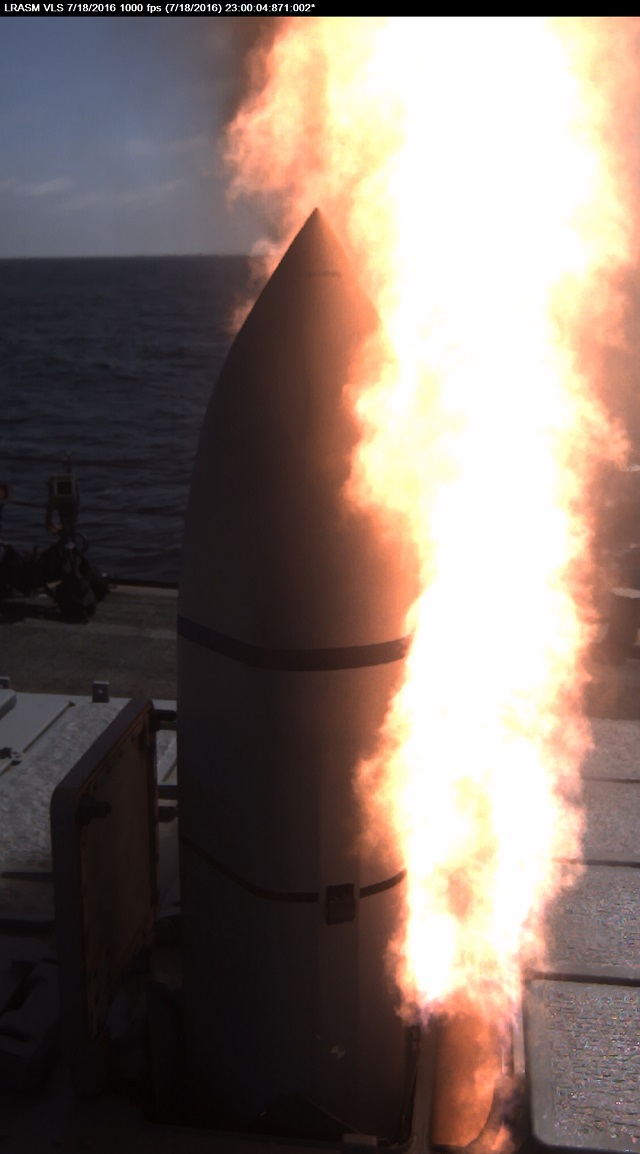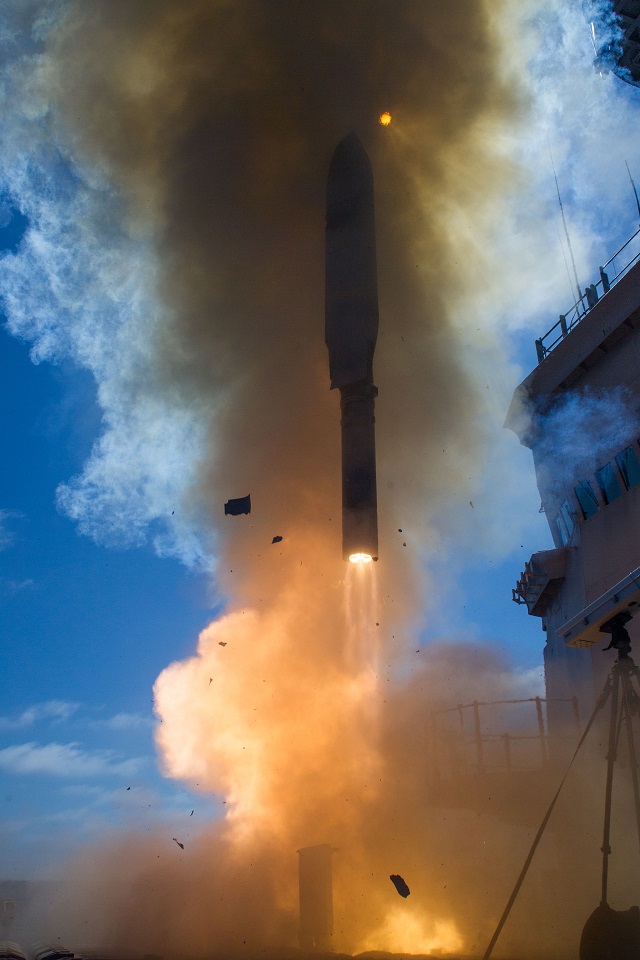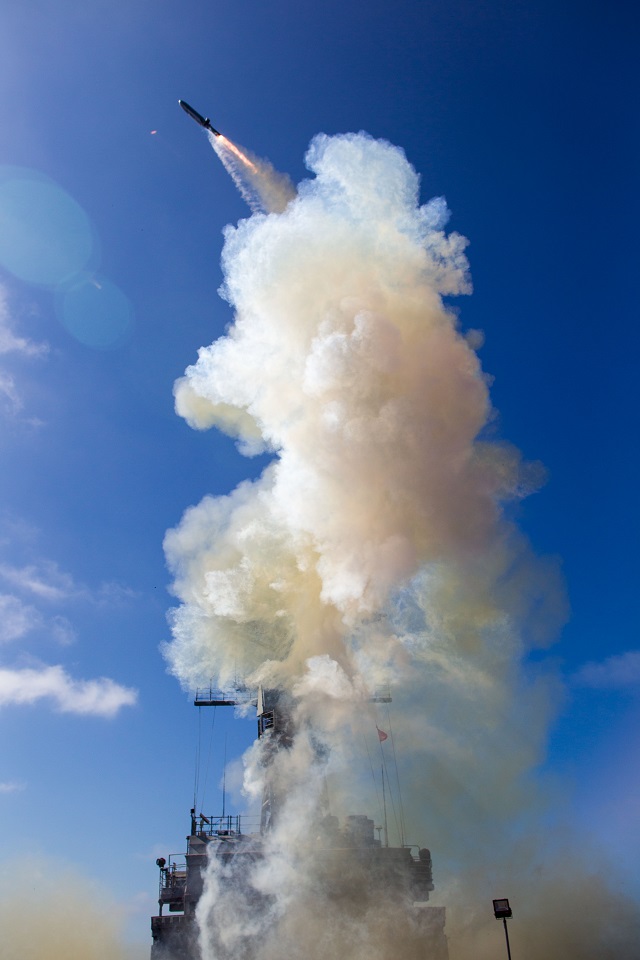| |
| a |
Naval
Technology - LRASM Tests at Sea |
Exclusive:
Pictures of the First LRASM Surface Launch Test at Sea |
By
Xavier Vavasseur - Chief Editor Navy Recognition obtained from Lockheed Martin some exclusive pictures showing the first Long Range Anti-Ship Missile (LRASM) surface-launch test at sea. The pictures show the LRASM being launched from a Mk 41 vertical launch system (VLS). Lockheed Martin first issued a press release about this test in July this year. |
 LRASM launched from a Mk 41 VLS aboard the U.S. Navy Self Defense Test Ship during an at-sea test. Lockheed Martin photo. |
|||
Scott
Callaway, LRASM Surface Launch director at Lockheed Martin, answered a
couple of our questions regarding these pictures: Navy Recognition (NR): Which ship launched the LRASM and from which location ? Scott Callaway (SC): The U.S. Navy Self Defense Test Ship (SDTS) was the launch platform for the most recent test at Pt. Mugu Sea Range, California. LRASM was the first missile fired from the ship since 1993. The SDTS is also known as the ex-Paul F. Foster (DD 964) and was the first ship to fire missiles against Iraqi targets in the defense of Kuwait during the Gulf War. DD 964 was decommissioned in 2003 and began service as the SDTS in fiscal year 2005. NR: What were the objectives of the test? SC: There were multiple objectives for the test. Among them was proving LRASM’s ability to load the pre-programmed mission via the modified Tactical Tomahawk Weapon Control System (TTWCS+), perform transfer alignment from the moving ship, and launch from the MK41 Vertical Launch System (VLS). LRASM exited the VLS container, cleanly separated from its Mk-114 booster and transitioned to the cruise phase. The missile successfully flew a pre-planned low-altitude profile collecting aerodynamics agility data while enroute to its pre-determined endpoint. All test objectives were successfully accomplished. |
|||
 LRASM launched from a Mk 41 VLS aboard the U.S. Navy Self Defense Test Ship during an at-sea test. Note the Mk-114 booster. Lockheed Martin photo. |
|||
NR: What is next? SC: We are developing and proving out a topside canister launcher to be used on the decks of surface ships without VLS cells. This is currently a key initiative within the U.S. Navy, and is being called “Distributed Lethality.” Lockheed Martin is committed to developing and delivering an affordable, survivable and lethal solution to meet the Navy’s goals. Lockheed Martin looks forward to the expected OASuW/Increment 2 competition next year. We intend to deliver the most capable and affordable solution to meet the projected warfighting requirements. We are investing and reducing integration risks on multiple launch platforms in order to provide a multi-role, multi-service, long-range precision weapon system. LRASM has proven itself capable of being both an air-launched and surface-launched solution that would provide anti-surface warfare capabilities to the entire U.S. Navy and Air Force fleets. |
|||
 LRASM launched from the U.S. Navy Self Defense Test Ship during an at-sea test. Lockheed Martin photo. |
|||
 Close-up view of the LRASM right after launch, with the booster still attached. Lockheed Martin photo. |
|||
Comments by Navy Recognition The first vertical launched LRASM test took place in September 2014. Navy Recognition reported during the SNA show in January that LRASM could potentially come with land attack capability. While this capability is not part of the current (OASuW increment I) set of requirements (increment II requirements have not been released yet), we were told that a software update would provide LRASM with such capability. This is because LRASM is based on the AGM-158 JASSM (Joint Air-to-Surface Standoff Missile) standoff land attack cruise missile. The LRASM is a long-range subsonic cruise missile designed for better range and survivability than current anti-ship weaponry. This missile development program is a joint effort of the Defense Advanced Research Projects Agency, Naval Air Systems Command and the United States Air Force. The air launched variant, designated AGM-158C, first phase of inflight tests was completed in early 2016. To learn more: Link to LRASM Long Range Anti-Ship Missile technical datasheet |
|||
|
Video: Interview on LRASM & Distributed Lethality during Sea Air Space
2016 |
|||










